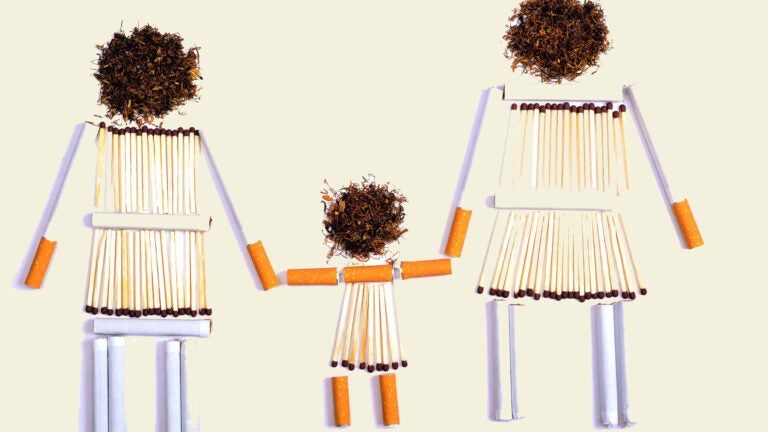
In the United States, between 30% and 40% of adults are affected by nonalcoholic fatty liver disease. The disease is also the most common liver problem found in children and adolescents. (Photo/iStock)
Secondhand smoke may be abetting rise of chronic liver disease in children and adults
Smoke exposure can alter how the liver processes fats, according to lab research, ultimately contributing to nonalcoholic fatty liver disease.
Secondhand smoke, which is linked to cancer and other serious illnesses, may also be contributing to soaring rates of chronic liver disease in adults and children, a new USC study finds.
The results of the study — conducted in mice — show that secondhand smoke exposure alters genes and molecular pathways that regulate how the liver processes fats. These molecular changes, once tested in humans, might be used as biomarkers to detect the disease at an early stage, when it is more treatable.
“From the standpoint of public health, our results have significant implications as they underscore how environmental carcinogens such as secondhand smoke, in addition to cancer-causing effects, may contribute to metabolic liver disease,” said lead author Stella Tommasi, an assistant professor of research at Keck School of Medicine of USC.
The study appears in the International Journal of Molecular Sciences.
In the United States alone, between 30% and 40% of adults are affected by nonalcoholic fatty liver disease (NAFLD), a condition characterized by the accumulation of fat droplets within liver cells in people who drink little or no alcohol. Among children and adolescents, it is the No. 1 liver disease. Those fat droplets impair normal liver function and can lead to cell rupture, inflammation and ultimately liver cancer.
Study finds link between smoke and liver disease
A number of studies have reported that smoking is an independent risk factor for NAFLD, in addition to obesity and metabolic syndrome. A weakness of those studies is the number of variables — age, weight, race/ethnicity — that blur the picture.
Animal studies looking at secondhand smoke and liver disease mostly have involved mice that were also fed a high-fat diet, Tommasi said, making it difficult to tease out the role of secondhand smoke.
These molecular changes have the potential to become irreversible.
Stella Tommasi
“The beauty — and relevance — of our study is that we used an animal model under strictly controlled experimental conditions, which allowed us to investigate the direct effects of secondhand smoke, independently of diet and/or other potential confounders,” she said.
For Tommasi’s study, she compared two groups of healthy mice. Each group was fed a standard diet, but only one was exposed to secondhand smoke. Mice exposed to secondhand smoke exhibited significant fat deposits in their liver cells, and the fat accumulation continued even after a one-month recovery time in clean air.
“These molecular changes have the potential to become irreversible,” Tommasi said. “Our findings also provide a plausible explanation for why children and never-smoking adults are at increased risk of developing NAFLD if they are exposed to secondhand smoke in the household.”
In addition to Stella Tommasi, other authors are Ahmad Besaratinia of the Keck School and Jae-In Yoon of the healthcare company HANDOK in South Korea.
The study was supported by grants from the National Institute of Dental and Craniofacial Research of the National Institutes of Health (1R01DE026043 to AB) and the University of California Tobacco-Related Disease Research Program (TRDRP-25IP-0001 and TRDRP-26IP-0051 to ST and TRDRP-26IR-0015 to AB).



